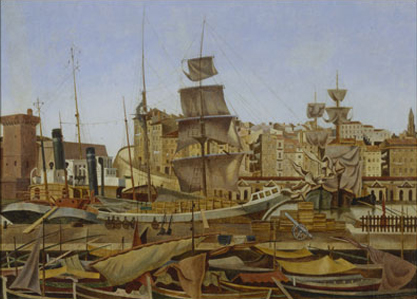Andrew Graham-Dixon on the varied apostasies of Edward Wadsworth, on show in Camden
In 1930, six years after the acrimonious termination of what had always been an uneasy friendship, Wyndham Lewis gave Edward Wadsworth a walk-on part in his satirical novel The Apes of God. Wadsworth appeared as a character called Richard, a wealthy marine painter with a heavy Yorkshire accent and an over-developed love of horses. This was Lewis's way of telling the world that he disapproved not only of Wadsworth's wealth - their friendship had broken up over a well meant attempt by Wadsworth to assist Lewis financially - but also, and more significantly, of Wadsworth's apostasy from Vorticism, the art movement Lewis had founded.
Lewis never forgave Wadsworth for abandoning the machine-age subject matter of Vorticism for the lyrical beach and harbour scenes he spent much of his later life painting. Even when Lewis came to feel more charitable towards Wadsworth, he continued to insist that his finest work was the product of his brief involvement with the Vorticist movement. ''He was an important artist,'' Lewis wrote in The Listener shortly after Wadsworth's death - ''a genius of industrial England (deflected, I think, into nautical channels).''
None of this would matter much were it not for the fact that most histories of British art have reflected Lewis's judgement, casting Wadsworth as an interesting satellite of Vorticism whose later work represented a sad falling off from early promise. Despite borrowing its title, ''A Genius of Industrial England'', from Lewis's Listener essay, the Wadsworth retrospective currently at the Camden Arts Centre prompts reappraisal. Wadsworth comes out of it as an intriguing figure whose range extended well beyond Vorticism, a painter of considerable talents deservedly rescued from the margins of art history.
This show begins, as it has to, with...


